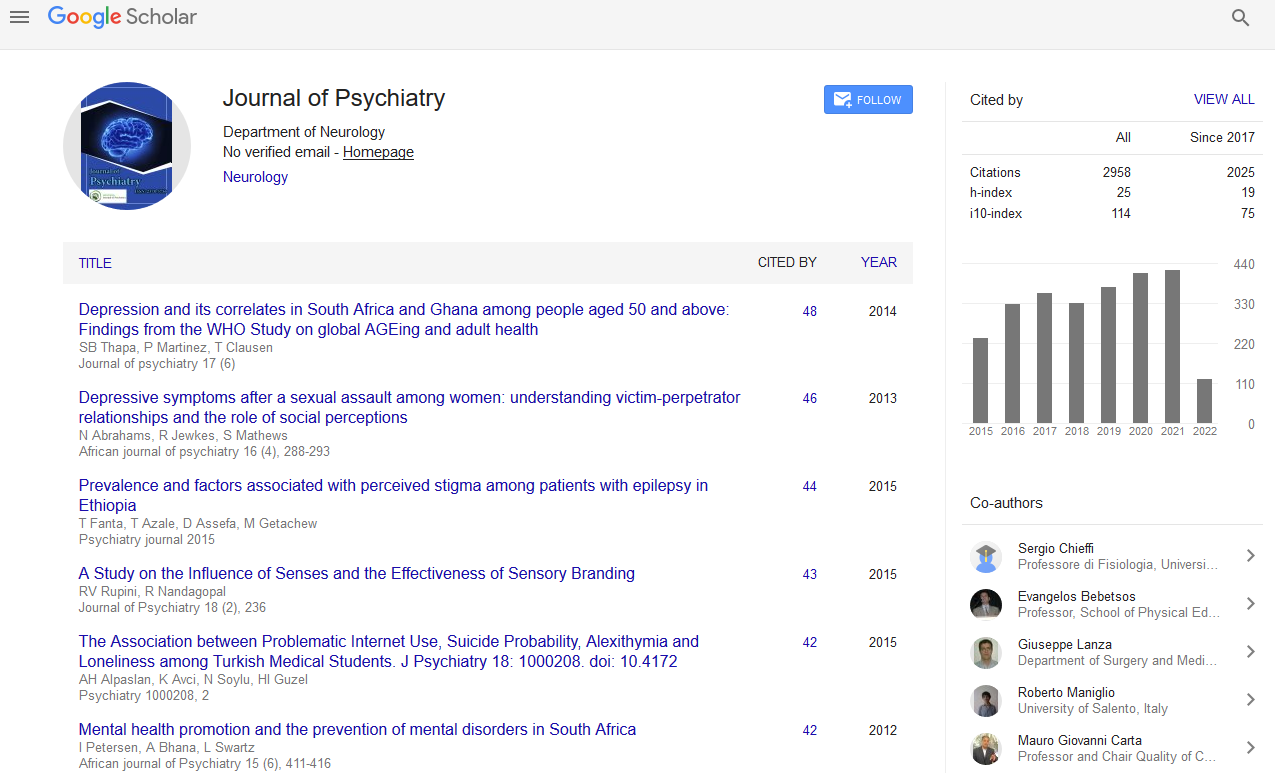PMC/PubMed Indexed Articles
Indexed In
- RefSeek
- Hamdard University
- EBSCO A-Z
- OCLC- WorldCat
- SWB online catalog
- Publons
- International committee of medical journals editors (ICMJE)
- Geneva Foundation for Medical Education and Research
Useful Links
Share This Page
Open Access Journals
- Agri and Aquaculture
- Biochemistry
- Bioinformatics & Systems Biology
- Business & Management
- Chemistry
- Clinical Sciences
- Engineering
- Food & Nutrition
- General Science
- Genetics & Molecular Biology
- Immunology & Microbiology
- Medical Sciences
- Neuroscience & Psychology
- Nursing & Health Care
- Pharmaceutical Sciences
Abstract
Premenstrual Dysphoric Disorder Among Female Students at Assosa Techinical Premenstrual & Vocational Education Training School,Assosa, Ethiopia
Desalew Jember, Bereket Duko and Getnet Mihretie
Background: Premenstrual dysphoric disorder (PMDD) is the most prevalent, but largely neglected psychiatric disorder. Somatic symptoms in women with premenstrual dysphoric disorder are severe enough to markedly affect usual daily activities. The factors such as age, educational status, income, and residence are the most frequently associated with it. There are few studies conducted on prevalence of PMDD and its associated factors in Ethiopia. Objective: To assess the prevalence and associated factors of premenstrual dysphoric disorder among Asossa Technical and vocational education Training School students at Asossa from May 12 up to June 12, 2015. Methods: Institutional based cross–sectional study was conducted. Data was collected by self-administered questionnaire on sociodemographic, obstetrical and gynecological, substance and PMDD symptoms using structured questionnaire and Screening tool which is used to get total number of 520 samples among students from TVET School by using simple Random sampling technique. Data was examined using descriptive statistics and logistic regression, odds ratios (OR) and 95% confidence intervals (95% CI). Results: The mean age of the respondents was 20.5 (± 2.6). The magnitude of premenstrual dysphoric disorder was 26.8%. When we adjusted for the effect of potential confounding variables, those having irregular menstrual cycle (AOR=1.36,95% CI,(1.82,2.25)), menstrual pain (AOR=1.41,95% CI (1.09,1.83)) and those did not use family planning methods (AOR=1.92,95% CI, (1.08,3.42)) were more likely to have premenstrual dysphoric disorder as compared to their counter parts. Conclusion: The magnitude of premenstrual dysphoric disorder was high (26.8%). Menstrual pain, menstrual irregularity and not using family planning methods had significant association. It needs early screening and intervention at primary health care settings.


